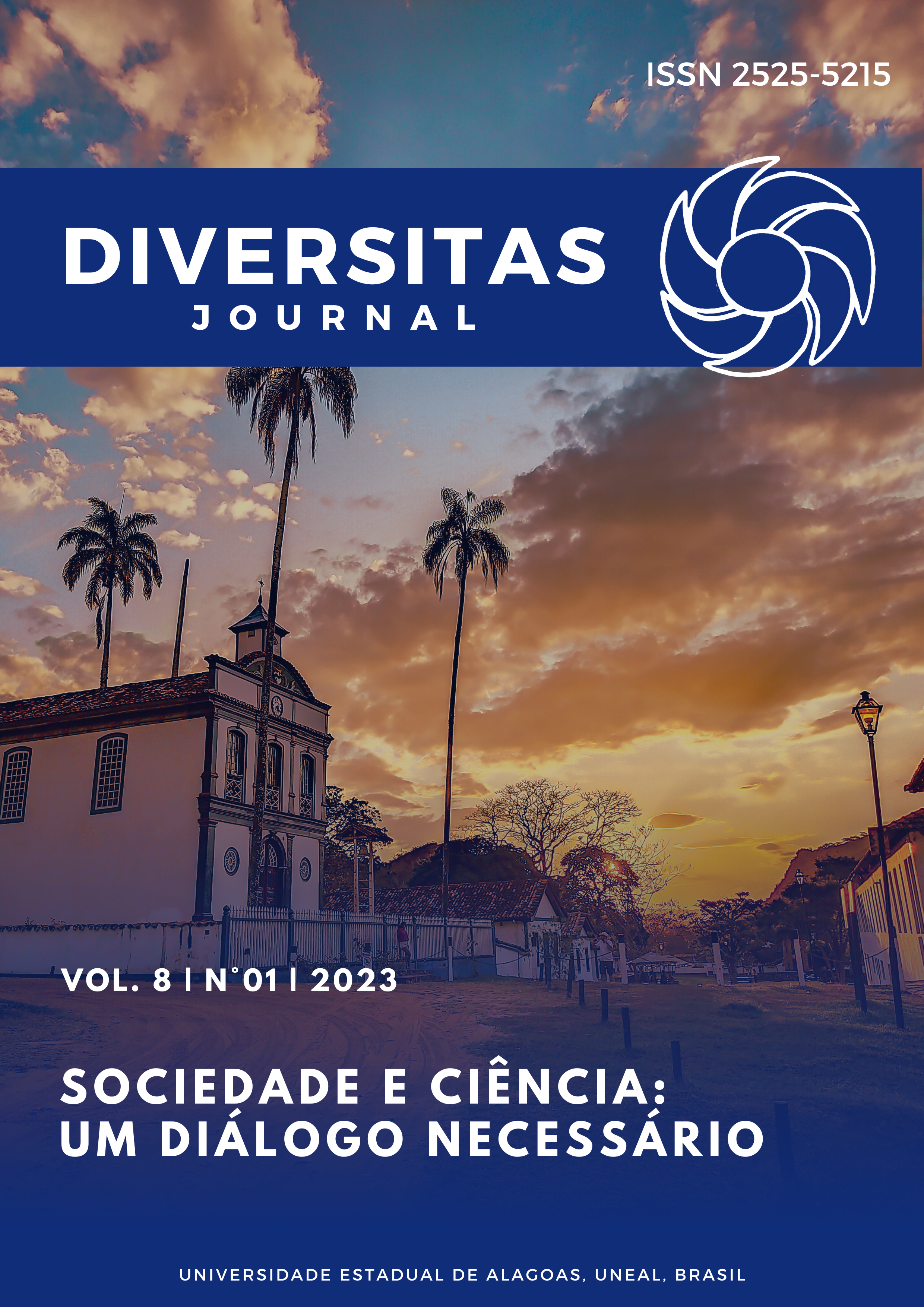AdubaPE - application low code to assist farmers in soil fertilization and correction in Pernambuco
DOI:
https://doi.org/10.48017/dj.v8i1.2385Keywords:
technology, agriculture, sustainabilityAbstract
Information and communication technology has been gaining more and more space in the management of city and rural problems, bringing efficiency, agility in processes and improving results and people's quality of life. Access to applications, social networks, and IoT (Internet of Things) devices has been intensifying and becoming increasingly popular, enabling the inclusion of more people in the digital world. The objective of this work was to develop a low code application that allows farmers, based on analytical reports of the soil, to verify the recommendation of fertilization and liming necessary for the crop to be planted. The technical data on fertilization and liming for the various crops planted in the state were obtained from the tables of recommendations for fertilizers and soil amendments for the state of Pernambuco, as Brazil, due to its large territorial dimension, has different types of soils, as well as predominant types of crops by region. The low code tool used was kodular, developed in MIT App Inventor to facilitate the coding of applications. This product is expected to provide opportunities for farmers in the state to minimize costs and increase productivity, as well as help protect the environment, since the exaggerated supply of fertilizers and soil amendments can lead to contamination, as well as surface and underground water with damage to the main uses. It is expected that food production aligned with sustainable innovation can contribute to improving the quality of life for people and the environment.
Metrics
References
Alamin, M. A., Malakar, S., Uddin, G., Afroz, S., Haider, T., & Iqbal, A. (2021). An Empirical Study of Developer Discussions on Low-Code Software Development Challenges. IEEE/ACM 18th International Conference on Mining Software Repositories (MSR), (pp. 46-57). doi:10.1109/MSR52588.2021.00018
Bernardino, F. S., & Demétrio, J. G. (2015). Análise sobre as causas de salinização dos aquíferos costeiros da planície do Recife. Águas Subterrâneas. Fonte: https://aguassubterraneas.abas.org/asubterraneas/article/view/28282
Bock, A. C., & Frank, U. (2021). Plataforma Low-Code. Bus Inf Syst Eng, 63, 733-740. doi:10.1007/s12599-021-00726-8
Borba, A. L., Costa Filho, W. D., & Mascarenhas, J. d. (2010). Configuração geométrica dos aquíferos da Região Metropolitana do Recife. Anais do XVI Congresso Brasileiro de Águas Subterrâneas e XVII Encontro Nacional de Perfuradores de Poços.
Cavalcanti, F. J., SANTOS, J. C., Pereira, J. R., Leite, J. P., Silva, M. C., Freire, F. J., . . . Lima, J. F. (2008). Recomendações de adubação para o Estado de Pernambuco: segunda aproximação (3ª ed.). Recife-PE: Instituto Agronômico de Pernambuco - IPA.
Costa Veloso, C. A., Botelho, S. M., Lopes Fernandes Rodrigues, J. E., & Silva, A. R. (2020). Correção da acidez do solo. Em E. Carvalho Brasil, M. d. Cravo, & I. J. Matos Viégas, Recomendações de calagem e adubação para o estado do Pará (pp. 121-131). Brasília-DF: EMBRAPA.
Costa, C. H., Crusciol, C. A., Neto, J. F., & Castro, G. S. (2016). Residual effects of superficial liming on tropical soil under no-tillage system. Pesquisa Agropecuária Brasileira, 51, 1633-1642.
EMBRAPA. (2018). Empresa Brasileira de Pesquisa Agropecuária. Acesso em 07 de 06 de 2022, disponível em Nutrisolo: https://play.google.com/store/apps/details?id=br.embrapa.infes&hl=pt_BR&gl=US
EMBRAPA. (2019). Empresa brasileira de Pesquisa Agropecuária. Acesso em 07 de 06 de 2022, disponível em Adubatec: https://adubatec-h.cnpmf.embrapa.br
EMBRAPA. (2022). Empresa Brasileira de Pesquisa Agropecuária. Acesso em 02 de 06 de 2022, disponível em Objetivos de Desenvolvimento Sustentável: https://www.embrapa.br/objetivos-de-desenvolvimento-sustentavel-ods/o-que-sao-os-ods
FertFacil. (2022). Sistema web para interpretação de análises de solo e cálculo de fertilização e calagem para o RS, SC e PR. . Acesso em 07 de 06 de 2022, disponível em https://www.fertfacil.com/pt-br/sistema/login
Fritura, M. (2019). Low code application development. Journal of Computing Sciences in Colleges, 34(6ª), p. 119.
Paiva, A. L., Cabral, J. J., Montenegro, S. M., & Costa Sobrinho, A. F. (2014). Aumento do risco de salinização da água subterrânea na planície do Recife devido à elevação do nível do mar. Anais XVIII Congresso Brasileiro de Águas Subterrâneas.
Santos, H. G., Jacomine, P. K., Anjos, L. H., Oliveira, V. Á., Lumbreras, J. F., Coelho, M. R., . . . Cunha, T. J. (2018). Sistema Brasileiro de Classificação de Solos (5. ed. rev. e ampl. ed.). Brasília-DF: Embrapa.
Santos, R. M. (2016). Caracterização e evolução hidrogeoquímica das águas subterrâneas do municipio de Recife-PE. Dissertação de Mestrado, UFPE, CTG, Recife.
Santos, R. M. (2020). Características hidrogeológicas e hidrogeoquímicas do Aquífero Boa Viagem na porção leste do bairro da Várzea-Recife-PE. Revista de Geografia , v.37 n.3, 405-421.
Soares, I. d., Costa, M. S., Gomes, M., Freitas, A. Á., & Barros, A. d. (2021). Estudo da remoção e controle de ferro nas águas da nascente Serra do Andrade-MG. Pesquisa, Sociedade e Desenvolvimento, v.10 n.6. doi:http://dx.doi.org/10.33448/rsd-v10i6.15980
Downloads
Published
How to Cite
Issue
Section
License
Copyright (c) 2022 Paulo Victor de Melo Telles, Vânia Soares de Carvalho, Bernardo Melo Oliveira, Hugo da Silva Rocha, Aida Araújo Ferreira, Ioná Maria Beltrão Rameh Barbosa

This work is licensed under a Creative Commons Attribution 4.0 International License.
The Diversitas Journal expresses that the articles are the sole responsibility of the Authors, who are familiar with Brazilian and international legislation.
Articles are peer-reviewed and care should be taken to warn of the possible incidence of plagiarism. However, plagiarism is an indisputable action by the authors.
The violation of copyright is a crime, provided for in article 184 of the Brazilian Penal Code: “Art. 184 Violating copyright and related rights: Penalty - detention, from 3 (three) months to 1 (one) year, or fine. § 1 If the violation consists of total or partial reproduction, for the purpose of direct or indirect profit, by any means or process, of intellectual work, interpretation, performance or phonogram, without the express authorization of the author, the performer, the producer , as the case may be, or whoever represents them: Penalty - imprisonment, from 2 (two) to 4 (four) years, and a fine. ”


















